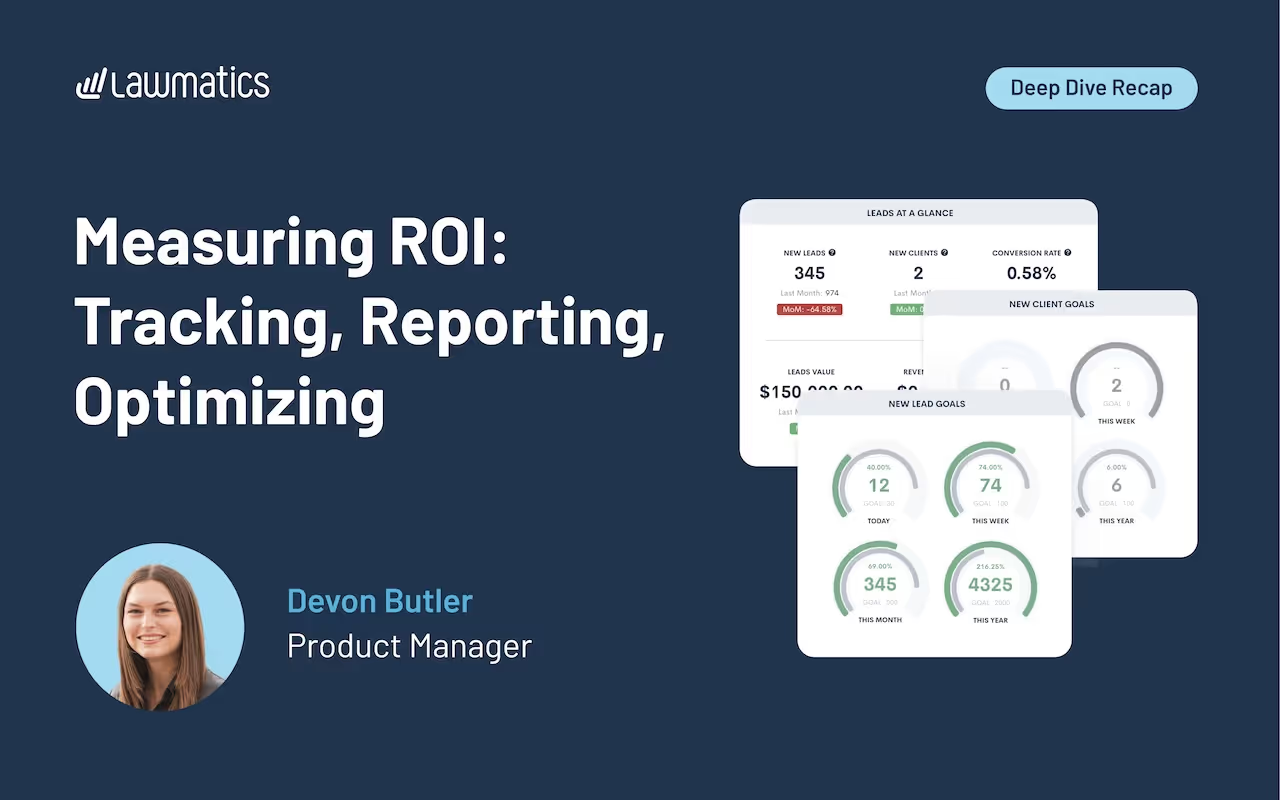Deep Dive Recap: Measuring ROI: Tracking, Reporting, Optimizing
Learn how to track marketing performance, prove ROI, and surface actionable insights using source attribution and reporting tools in Lawmatics.

Table of contents
Firms spend serious time and money bringing in new leads, but when it comes to knowing which efforts actually drive revenue, the picture is often fuzzy. Without reliable source tracking and clear reporting, it’s hard to tell where your marketing budget is paying off and where it’s getting wasted.In this month’s Deep Dive, Product Manager Devon Butler walks through how to set up and optimize marketing attribution in Lawmatics, from source creation to custom ROI reports and dashboards that help you make smarter, faster decisions.
Time stamps of key takeaways
8:13 – Set up marketing sources to start tracking
Devon begins in the settings page, where she demonstrates how to create a clean hierarchy of sources and campaigns. She highlights the importance of tracking costs for each source, from digital ads to referrals. This setup lays the foundation for accurate attribution and reporting later in the client lifecycle.
14:49 – How sources are assigned and tracked
Once sources are configured, Lawmatics automatically assigns them to new leads using form UTMs, CallRail tracking, or embedded snippets on your site. Devon breaks down how attribution is preserved throughout the client journey, from first click to hire. She also outlines common missteps, like missing UTMs or unlinked forms, that can cause breakdowns in source tracking.
24:17 – Monitoring ROI
The ROI Tracker gives a side-by-side view of each source’s leads, hires, revenue, spend, and return. Devon explains how the data flows directly from the marketing source setup and shows examples of real performance breakdowns. This report helps firms understand which channels are producing value and which ones aren’t.
36:18 – Creating a custom report and dashboard
To better understand what’s driving ROI, Devon builds a custom report that breaks down lead conversion by salesperson. She uses that as one example, noting that you can report on anything from practice area performance to time-to-hire. Once created, reports can be added to a dashboard so your most important metrics are always front and center, making it easy to track trends, spot issues, and share insights with your team.
Webinar slide deck
Ready to grow your law firm with Lawmatics?
Schedule a demo of legal’s most trusted growth platform.








.avif)